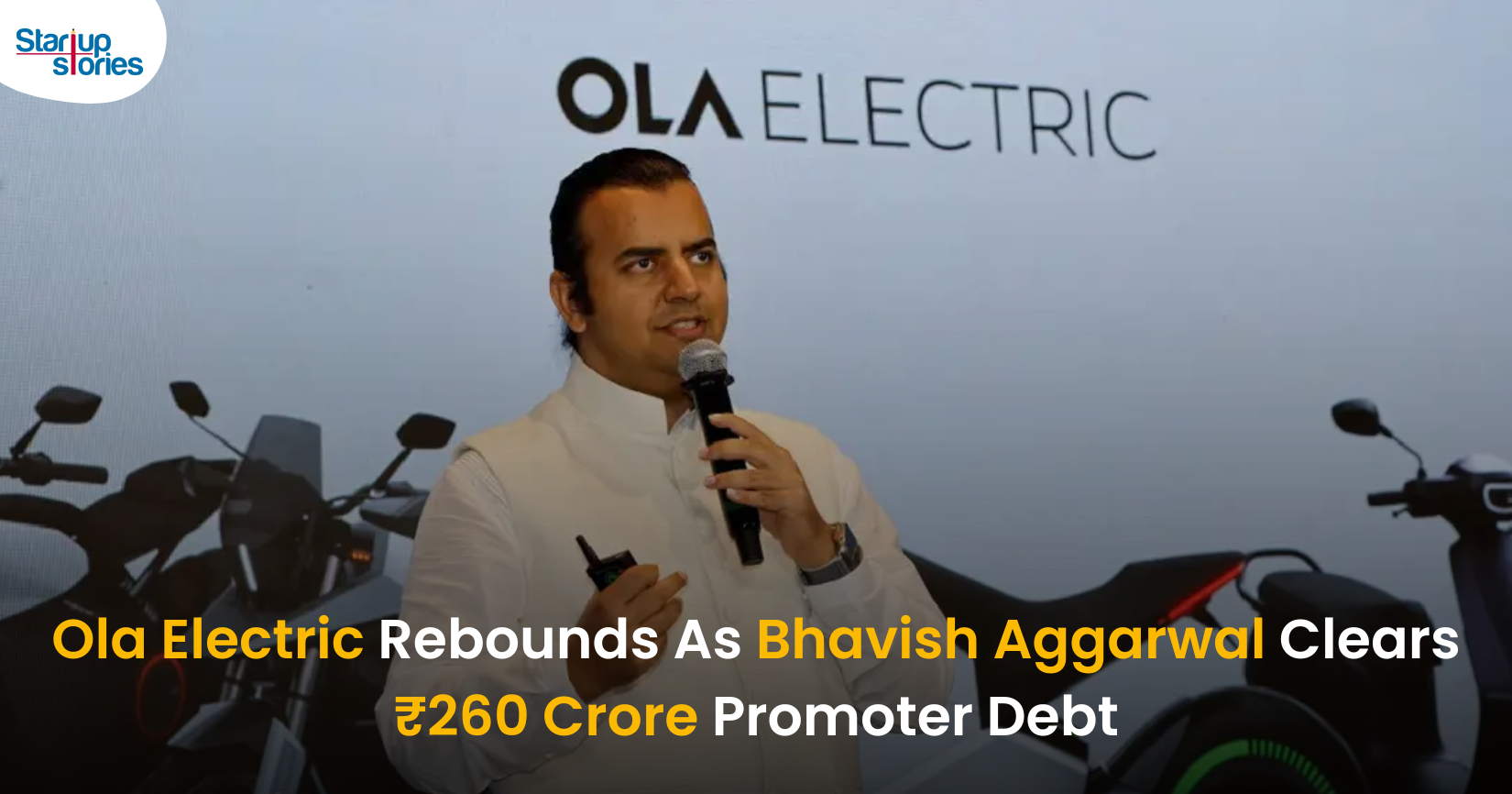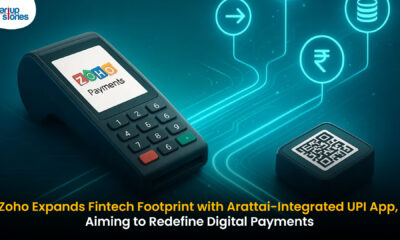Latest News
Microsoft Anticipates Slower Cloud Growth Despite Strong Q1 Earnings!

Microsoft has projected a slowdown in its cloud business growth for the upcoming second quarter, even as it reported strong earnings for the first quarter of fiscal year 2025. The tech giant announced a revenue of $65.6 billion, reflecting a 16% increase from the previous year and exceeding Wall Street expectations. Net profits also rose to $24.67 billion, marking an 11% year-over-year increase.
Strong First Quarter Performance
The robust results were significantly bolstered by Microsoft’s cloud services, which generated $38.9 billion in revenue, up 22% from the same period last year. The company’s intelligent cloud segment, which includes Azure, Windows Server, and enterprise services, reported revenue of $24.1 billion, a 20% increase year-over-year. This growth has been largely attributed to rising demand for AI services and the successful integration of artificial intelligence into Microsoft’s product offerings.
CEO Satya Nadella emphasized the critical role of AI in driving this growth, stating that Microsoft is expanding its customer base by helping businesses leverage its AI platforms for operational efficiency. He noted that usage of Azure OpenAI has doubled in the past six months, highlighting the increasing reliance on Microsoft’s cloud solutions for AI development.
Outlook for Second Quarter
Despite these encouraging results, Microsoft executives have expressed caution regarding future growth. The company anticipates that Azure’s sales growth will slow to between 31% and 32% in the second quarter, down from 33% in the previous quarter. This forecast has raised concerns among investors, particularly as it reflects constraints in data center capacity amid surging demand for AI services.
CFO Amy Hood explained that this guidance for slower growth is primarily due to these capacity constraints, which may limit Microsoft’s ability to meet increasing customer demands for cloud services.
Market Reactions
Following the earnings announcement, Microsoft’s stock experienced a modest increase of 1.3% in after-hours trading, reaching $438.28 per share. Analysts remain optimistic about Microsoft’s long-term prospects due to its substantial investments in AI and cloud infrastructure. However, the projected slowdown has led to mixed sentiments among investors who are closely monitoring the company’s ability to maintain its growth trajectory amid a competitive landscape.
Strategic Investments
Microsoft’s commitment to expanding its data center capacity is crucial as it seeks to capitalize on growing demand for cloud and AI services. The company has been investing heavily in infrastructure to support its cloud operations, with capital expenditures rising significantly in recent quarters.
Despite some challenges, analysts believe that Microsoft’s strategic investments will enable it to accelerate Azure’s growth in the latter half of fiscal 2025. The company’s efforts to integrate AI across its product lines are expected to drive future revenue as businesses increasingly adopt these technologies.
Conclusion
Microsoft’s strong first-quarter results underscore the robust performance of its cloud business and the growing importance of AI in driving revenue. However, the anticipated slowdown in Azure’s growth raises questions about future performance and capacity management as demand continues to rise. As Microsoft navigates these challenges, its ability to adapt and innovate will be critical in sustaining its leadership position in the cloud computing market while continuing to meet the evolving needs of its customers.
Latest News
How Pronto Is Redefining 10-Minute Home Services in India with a $25 Million Fundraise

Home services startup Pronto is in advanced talks to raise about $25 million at a near-$100 million valuation, underscoring strong investor confidence in India’s fast-growing 10-minute home services market. This potential round would be the company’s third major funding milestone after its $2 million seed and $11 million Series A in 2025, backed by marquee investors such as General Catalyst, Glade Brook Capital, Bain Capital and new participant Epiq Capital. The fresh capital is expected to further strengthen Pronto’s positioning as a leading tech-led household help platform for urban consumers.
Pronto operates a 10-minute on-demand home-services platform that connects users with trained, background-verified workers for everyday tasks like sweeping, mopping, utensil cleaning, laundry and basic cooking. Using a hub-and-spoke, shift-based model, the startup stations workers at hyperlocal hubs, enabling sub-10-minute fulfilment and more predictable earnings compared to the informal domestic-help market. Founded in 2024 by Anjali Sardana and based in Delhi NCR, Pronto has already expanded from Gurugram into major cities such as New Delhi, Mumbai, Bengaluru and Pune, and is handling around 6,000 daily bookings with nearly 1,300 active professionals as of December 2025.
The upcoming $25 million fundraise is expected to be used to enter more metros, deepen presence in existing neighbourhoods with additional hubs and upgrade Pronto’s technology for smarter routing, shift planning and real-time operations. A significant portion of the capital will also go into training, retention and benefits for its workforce to maintain consistent service quality at scale, especially as competition heats up from rivals like Snabbit and Urban Company in the rapid home services space. This near-$100 million valuation not only validates Pronto’s model but also highlights a broader shift toward organised, tech-driven domestic-help solutions in India’s largely informal home-services market.
Latest News
Bhavish Aggarwal Sells ₹325 Crore Ola Electric Stake, Retains Control

Bhavish Aggarwal has sold Ola Electric shares worth about ₹325 crore over three consecutive trading sessions, primarily to fully repay a promoter-level loan of ₹260 crore and release all pledged promoter shares. Despite the stake sale, he continues to hold a significant shareholding of over 34 percent in Ola Electric, and the company has clearly stated that there is no change in promoter control or his long-term commitment to the business. This one-time, limited monetisation at the promoter’s personal level is positioned as a structural clean-up rather than a signal of reduced confidence in the company.
The transactions, executed through open-market bulk deals, included an initial sale of about 2.6 crore shares worth roughly ₹92 crore at an average price of ₹34.99 per share, followed by additional trades of around ₹142 crore and ₹90 crore, taking the total sale value to approximately ₹324–325 crore. As a result, Aggarwal’s stake has fallen by a little over 2 percent, while all previously pledged promoter shares about 3.93 percent of Ola Electric’s equity are being released, removing the overhang and risk typically associated with pledged stock. The company has also clarified that these deals do not involve any capital raise or dilution by Ola Electric itself, which is important for investors tracking promoter stake and governance.
The share sale came at a time when Ola Electric’s stock had been under pressure, even hitting an all-time closing low amid concerns around growth, competition and heavy promoter selling. However, once the company confirmed that the stake sale was complete and all promoter-level pledges would be cleared, the stock rebounded sharply, gaining around 9–10 percent as markets welcomed the removal of this technical overhang. For investors, the focus is now expected to shift back to Ola Electric’s core fundamentals EV sales growth, margins, and market-share performance in India’s two-wheeler EV segment while the reduced promoter debt risk and continued high promoter holding offer some comfort on long-term alignment.
Latest News
Kuku FM’s $200 Million IPO: Mebigo Labs Hires Top Bankers to Lead Public Listing

Kuku FM’s parent company, Mebigo Labs, has hired leading investment banks to prepare for a 200 million dollar IPO in India, marking a major milestone for the country’s digital audio ecosystem. The Mumbai-based company has reportedly appointed Kotak Mahindra Capital, Axis Bank and Morgan Stanley’s India unit to manage the proposed share sale, which is likely to be launched on Indian stock exchanges once key regulatory steps are completed. This move signals strong intent to tap public markets and test investor appetite for subscription-led regional audio platforms in India.
The planned IPO proceeds are expected to help Kuku FM expand its content library, strengthen its regional language offerings and invest in technology to enhance user experience. With a focus on Hindi, Marathi, Tamil and other Indian languages, Kuku FM aims to capture the fast-growing audience in Tier 2 and Tier 3 cities seeking affordable audiobooks, courses and storytelling content. The funds could also provide additional firepower for marketing, partnerships and product innovation, helping the platform compete more aggressively in India’s crowded digital entertainment and creator economy landscape.
Founded in 2018, Kuku FM has built a subscription-driven business model and has reportedly scaled to millions of paying users, backed by multiple funding rounds from prominent investors. Its decision to pursue a 200 million dollar IPO positions it as one of the first major Indian audio platforms to attempt a public listing, potentially paving the way for other podcast and niche content startups to follow. As the IPO process moves forward, Kuku FM’s performance in the public markets will be closely watched as a key indicator of how investors value regional, knowledge-first audio platforms in India’s booming digital economy.













Binance注册奖金
March 16, 2025 at 8:02 am
I don’t think the title of your article matches the content lol. Just kidding, mainly because I had some doubts after reading the article.
Sign Up
April 17, 2025 at 9:32 am
Thanks for sharing. I read many of your blog posts, cool, your blog is very good.
0j06e
June 4, 2025 at 12:32 am
where to buy clomid tablets where can i get clomid pill can i purchase clomiphene pills how to get generic clomid pill can i purchase clomid pills where to buy generic clomid tablets clomiphene for low testosterone
MM88
November 7, 2025 at 4:36 am
Với giao diện mượt mà và ưu đãi hấp dẫn, MM88 là lựa chọn lý tưởng cho các tín đồ giải trí trực tuyến.
GO88
November 7, 2025 at 11:52 am
Tham gia cộng đồng game thủ tại Go88 để trải nghiệm các trò chơi bài, poker phổ biến nhất hiện nay.
iwin
November 8, 2025 at 1:33 pm
iwin – nền tảng game bài đổi thưởng uy tín, nơi bạn có thể thử vận may và tận hưởng nhiều tựa game hấp
站群程序
November 8, 2025 at 7:11 pm
搭载智能站群程序,自动化搭建与管理,为SEO项目提供核心驱动力。站群程序
站群程序
November 12, 2025 at 12:23 pm
采用高效谷歌站群策略,快速提升网站在搜索引擎中的可见性与权重。谷歌站群
MM88
November 14, 2025 at 4:51 pm
Khám phá thế giới giải trí trực tuyến đỉnh cao tại MM88, nơi mang đến những trải nghiệm cá cược thể thao và casino sống động.
Spirit Casino Bonus Code heute
December 21, 2025 at 3:01 pm
Vergleichen Sie die besten Casinos und spielen Sie verantwortungsbewusst.
Die Boni an den Spielautomaten in Dragon Money sind großzügig, ich habe 50 Freispiele in dieser casino
bekommen! Die Live-Dealer-casinos sind großartig, Dragon Money von lässt dich wie in einem
echten Casino fühlen. Die Gewinnauszahlungen in Dragon Money sind schnell und problemlos, was bei einer casino wichtig ist.
Das Sportwetten-Angebot bietet wettbewerbsfähige Quoten, verschiedene Wettmärkte und Live-Optionen. Evolution Gaming
liefert den Großteil der Live-Tische und sorgt für flüssiges Gameplay und professionelles Dealer-Verhalten. Der Live-Casino-Bereich bei Dragon Money bietet eine authentische
Casino-Atmosphäre, in der Spieler per HD-Videoübertragung mit echten Dealern interagieren können. Die intuitive Benutzeroberfläche ermöglicht es Spielern, einfach zwischen den Spielkategorien zu
navigieren und neue Titel zu entdecken. Tischspiele umfassen beliebte Varianten von Blackjack, Roulette, Baccarat und Poker.
Die Plattform umfasst Hunderte von Spielautomaten, klassische Tischspiele, Live-Dealer-Tische und eine umfassende Sportwetten-Sektion.
Je höher Ihr Level, desto mehr Vorteile erhalten Sie – darunter Cashback, exklusive Boni, persönliche Betreuung und
Sonderaktionen. Dragon Casino verfügt über
mehr als 3.000 Spiele, darunter Slots, Live-Casino, Tischspiele, Megaways,
Crash Games und Sportwetten. Die Plattform ermöglicht
das Setzen von Einzahlungslimits, Sitzungszeitbegrenzungen und bietet Selbstausschlussoptionen von 24 Stunden bis zu 6 Monaten.
References:
https://online-spielhallen.de/hitnspin-login-direkt-ins-casino/